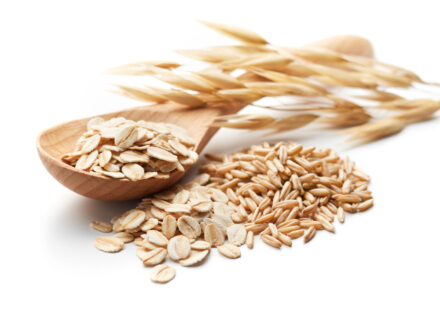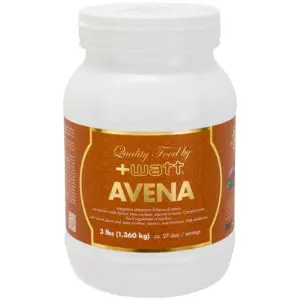Oat
Oat represents one of the healthiest cereals in the world, but unfortunately, it is still not very popular among consumers. Let’s find out its nutritional properties and the benefits it can bring.
Oat is a product with well-balanced macronutrients and rich in different micronutrients. Here are some of its nutritional values.
● Vitamins and Minerals
100 grams of oat contain:
Magnesium — 138 mg — 44% NRV
Iron — 4,25 mg — 26% NRV
Zinc — 3,64 mg — 26% NRV
Copper — 0,391 mg — 31% NRV
Vitamin B1 — 0,46 mg — 51% NRV
NRV (Nutritional Reference Values) indicate the amount of vitamins and minerals that a person should take to meet the minimum daily requirement (U.S. Department of Agriculture).
● Protein
Compared to many other cereals, oat has a higher protein content (in 100 grams of oat there are 12,13 grams of protein compared to 6,6 grams of those in rice), thus, it provides a notable amount of vegetable protein (U.S. Department of Agriculture).
In addition, compared to other cereals, it also provides a higher amount of one essential amino acid — L-lysine. It performs many important functions: together with vitamin C it participates in the collagen synthesis, represents a precursor of carnitine and vitamin B3, it is also a part of the hair structure (for this reason it is often used in hair supplements).
● Carbohydrate
Oat contains fewer carbohydrates than other cereals: 60,5 per 100 grams. These are complex carbohydrates that provide long-term energy supply and increase and prolong the sense of satiety.
● Fibers
Fiber is a type of carbohydrate that passes through the intestine indigested, unlike most carbohydrates that are metabolized into simple sugar molecules. Oat is very rich in fiber (100 grams contain one-third of the recommended daily amount). In particular, beta-glucans can have beneficial effects on lipid metabolism (by helping to lower cholesterol) and on carbohydrate metabolism (as they lower the glycemic index of the food). In a recent meta-analysis it has been shown that even in patients with diabetes, short dietary interventions with oats can lead to a significant reduction in blood sugar (Storz & Küster, Nutr Health, 2019). In another study, 3 g of soluble oat fiber (3 portions of oat flour, 28 g each) was shown to reduce total and LDL cholesterol (Brown et al., Am J Clin Nutr, 1999).
In addition, this high amount of fiber can be useful for the intestine, since it accelerates the transit of food and promotes the proliferation of beneficial bacteria, improving intestinal health. (Valeur et al., Br J Nutr, 2016).
● Gluten-free
Oats are naturally gluten-free, therefore it can be consumed by intolerant individuals. Beware that since oats are often processed together with other cereals, it can be contaminated with gluten, therefore, always check the label.
+Watt Advice
To sum up: oat is a complex carbohydrate with a good amount of vegetable protein and many other nutrients. It can be considered a prebiotic food, as it helps to maintain the well-being of the intestine and intestinal microbiota. In addition, oats can help to lower blood sugar and cholesterol levels.


